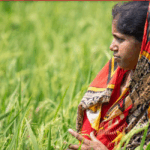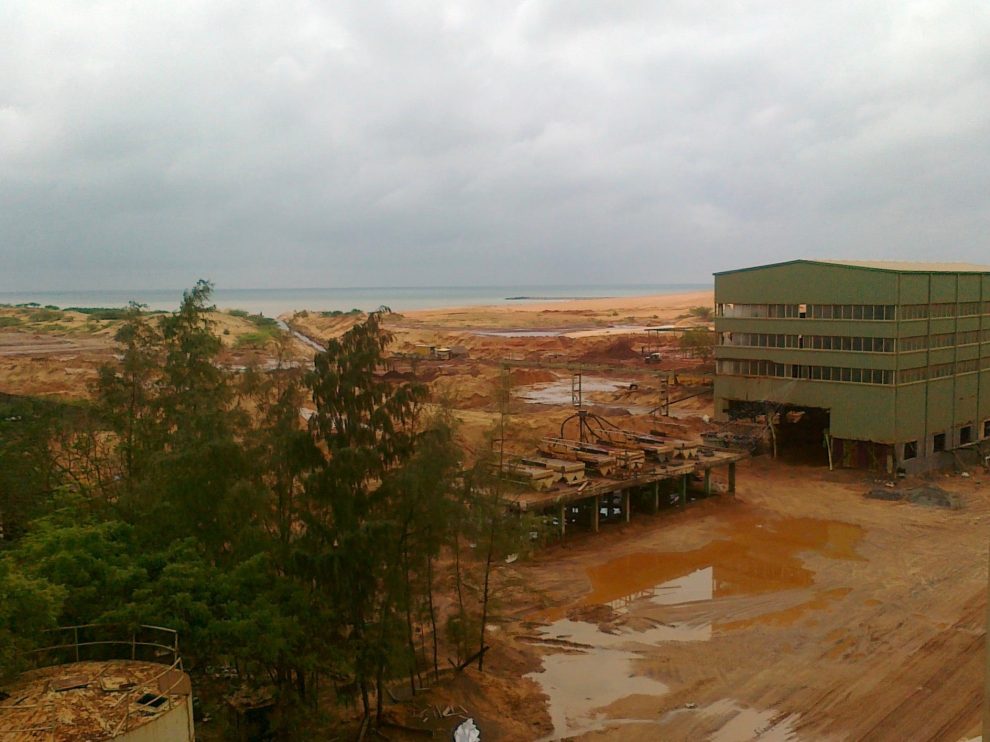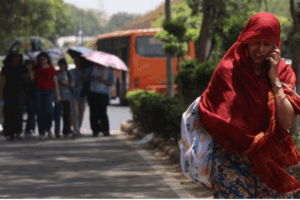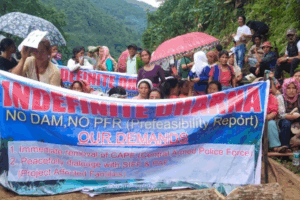(As Figures vary somewhat from study to study, nearby rounded Figures are given here).
—————
1. The GoI submitted its NDC (at that time, called Intended NDC or INDC) to the UNFCCC, on October 02, 2015. This was ratified in 2016.
2. For context —
2a. India is the 3rd largest Carbon emitter now, by country figures (after China and USA), and fourth largest if European Union is taken as one. Indias absolute CO2 emissions are about 2.5 Gtons (250 crore tons) in 2018, which was about 7.2% of global emissions.
2b. India is also the 3rd largest energy consumer by country position, with about 5.8% of global primary energy Consumption.
2c. India had a “per capita” emission of about 1.8 tons in that Year (there are huge disparities between different segments of population).
2d. Indias ‘per capita emission’ is indeed much lower than the Global average of over 4.35 tons/person/year. Indias historical (cumulative) emissions per capita is even much lower, as the majority of the increase has taken place in the last 25-30 years.
2e. The farmers’, Poor people, non-car-non-flying Indians, including the Urban Poor and lower middle classes, have a far lower per capita emission than this :national average’, but are taking disproportionately large hits from Climate impacts.
2f. Over the last 5-6 years, Indias percentage Increase in CO2 emissions was the highest amongst major economies (Though China increased more in absolute term, because of its much larger base).
2g. Indias per capita commercial primary energy Consumption in 2018 was around 680 KgOe, while per capita electricity Consumption was around 1150 Kwhrs /person/year (again, with huge internal disparities in both).
2h. Out of India’s total primary commercial Energy Consumption of about 880 Mtoe (million tons oil equivalent), about 33% or 1/3rd is imported, mostly as petroleum, natural gas and low ash Coal. This has huge Financial and policy implications.
———————-
3. Indias NDC clearly states that Coal is its main energy source now, and will remain so in the forseable future. About 68% of Indias electricity generation and about 55% of it’s Total commercial primary energy comes from coal, with India having about 200,000 MW of installed coal power capacity, out of a total of 365,000 MW electricity (Jan.2020)) from all sources. This is Despite the Fact that Coal is by far the most emission intensive fossil fuel (lower grades and lignite – the highest).
4. Out of the major economies, Indias is the only one which has Not pledged any upper limit of emissions, neither has it given any timeline by which it’s emissions will Peak and then fall. Of course with the USA moving forward to withdraw from Paris Agreement, that might change.
5. In it’s NDC, India has basically pledged 3 quantified targets (+some Sanskrit shlokas and some nice & vague language about Climate Actions) —
5a. By 2030, the emission’ intensity of Indias economy (kg of GHG emitted, say for every Rs.10,000 GDP) will decrease by 33-35%, compared to a 2005 baseline.
5b. By 2030, Non-fossil fuel sources (including nuclear fission and big dam Based hydro power, not renewables alone) will account for at least 40% of Indias Installed Power capacity. This is said to be with low cost technology transfer and international finance.
At that point in time (October 2015), Indias Renewable electricity target was having 175,000 MW Installed capacity by 2022, with 100,000 MW Solar, 60,000 MW Wind (rest from small hydro, biomass and “waste-to-wnergy”).
In September 2019, Indian PM announced a sharply upgraded target of 450,000 MW of Renewable installed capacity – without clearly mentioning a date, but widely interpreted to be compliant with 2030 PA deadline.
5c. India will sequester an additional 2.5–3.0 Gtons (250-300 crore metric tons) of CO2, through afforestation and reforestation / forest densification, between 2016 and 2030. The achivement will be by Increasing carbon stock in Both Forests and ‘tree-cover’!
6. How far has India gone on its NDC / Paris Climate Pledges in the last 4 years (2016-2019) ? —
6a. Decrease in emission’ intensity — Indian Economy is Already about 25% less emission intensive now, in comparison to the 2005 baseline. That shows that achieving 35% reduction over 2005 baseline will be achieved much before 2030, the PA Pledge deadline. In fact, present projections show a roughly 50% reduction of emission’ intensity by 2030, compared to 2005 baseline. This also brings out the low levels of ‘pledge targets’ or low ‘ambition’.
6b. Non-fossil fuel electricity — India at present (Jan.2020) has 38% of it’s installed electricity capacity from Non-fossil sources. Even considering just the new renewables, like Solar, wind, biomass-electricity, small hydro & WTE (many of these has serious issues), the present installed capacity is about 23% of the total. In 2019, the Indian government recategorized large hydro power as ‘renewable’ energy source (there is strong reservations on this by many groups, on valid grounds). This has – in ‘one pen stroke’, increased the RE electricity capacity by about 45,000 MW. To be fair to the GoI, many countries do count large hydropower as renewable energy, with all its attendant issues.
6c. The “additional CO2 sequestration” pledge has Not gone very far, as this involves large amounts of Both forest & some non-forest lands. By GoI estimates, India now has about 21.7% of its land area of 328.9 million hectares under “Forests”, with moderately dense forests and degraded forests both accounting for a little over 9% each. Dense forests cover the rest of roughly 2.7% of land declared under forest department (Indias biggest ‘landlord’).
Out of the 71.3 million hectares of ‘forest department’ land, the estimates shows that at least 32-35 million hectares would be needed for achieving the CO2 sequestration pledge. Large tracts of the ‘degraded and moderately dense’ forest lands are also either home to large no of ‘adivasis’ (‘indigenous People’s) and/or their source of Livelihoods. Planting “high carbon sequestering” trees in large tracts of such lands – often denying traditional uses, are bound to lead to large scale conflicts, some of which have already started. The GoIs recent attempts to stall the Forest Rights Act implementation, to throw out over 1 .8 million forest dwelling families (on the ground that their FR applications were rejected),…..are possibly indications of this developing conflict. Human rights in all it’s form must be protected, when “Climate Actions” are planned and implemented.
________.
Soumya Dutta (Mr).
Co-convener : South Asian People’s Action on Climate Crisis SAPACC , /
Movement for Advancing Understanding on Sustainability And Mutuality (MAUSAM)/
Bharat Jan Vigyan Jatha BJVJ /
India-Climate-Justice ICJ.


















